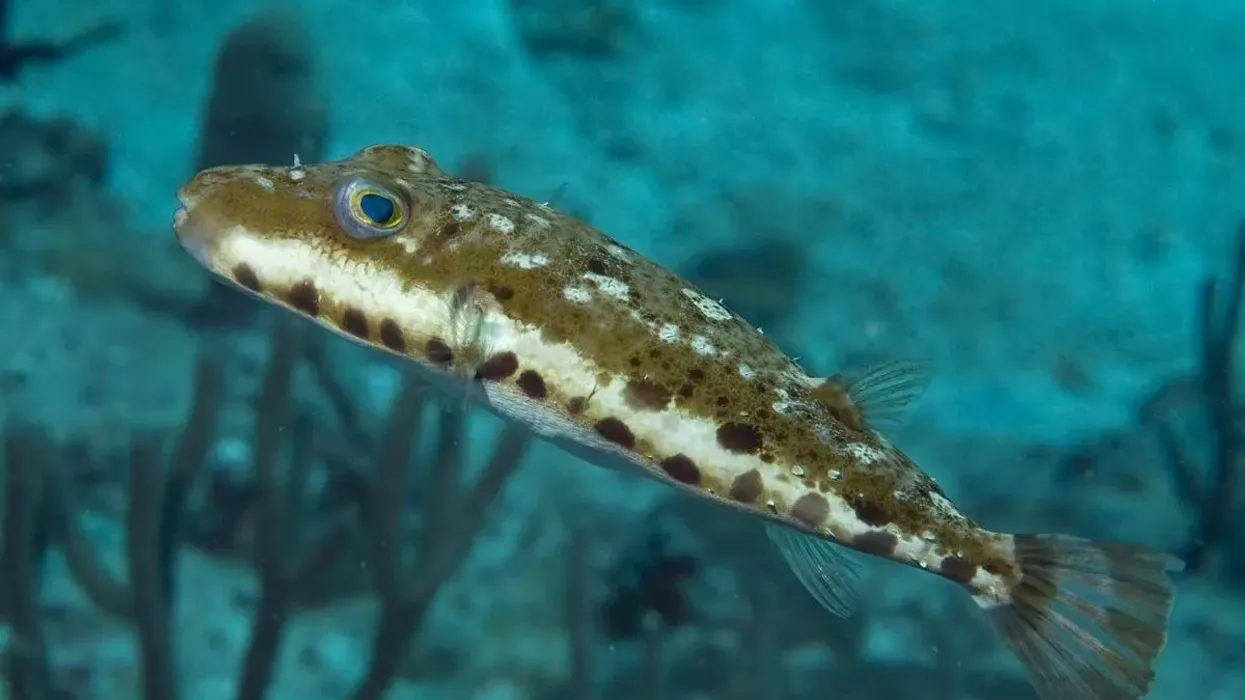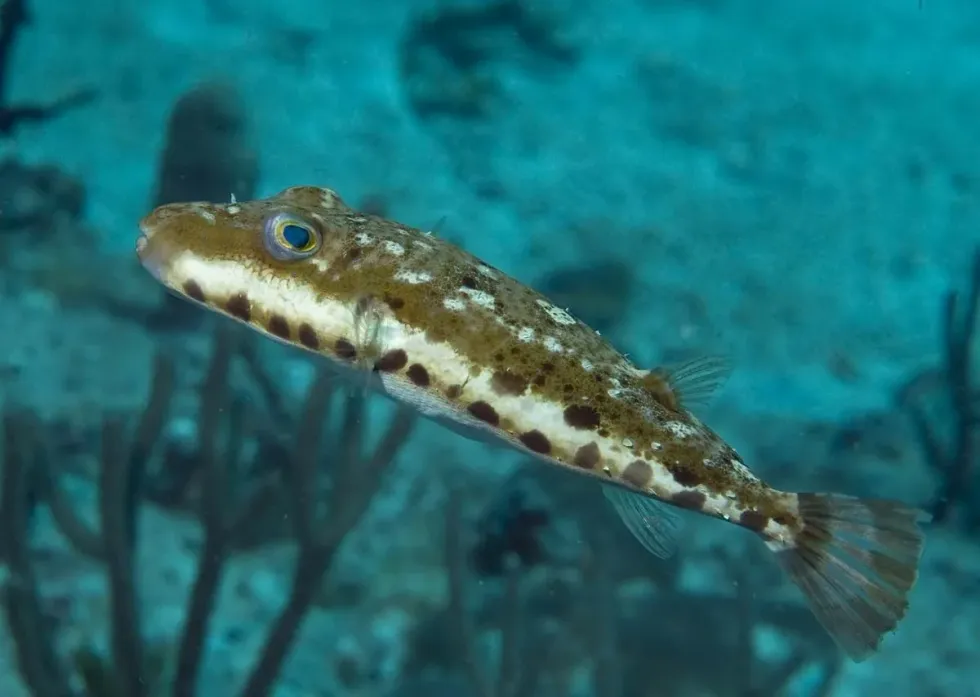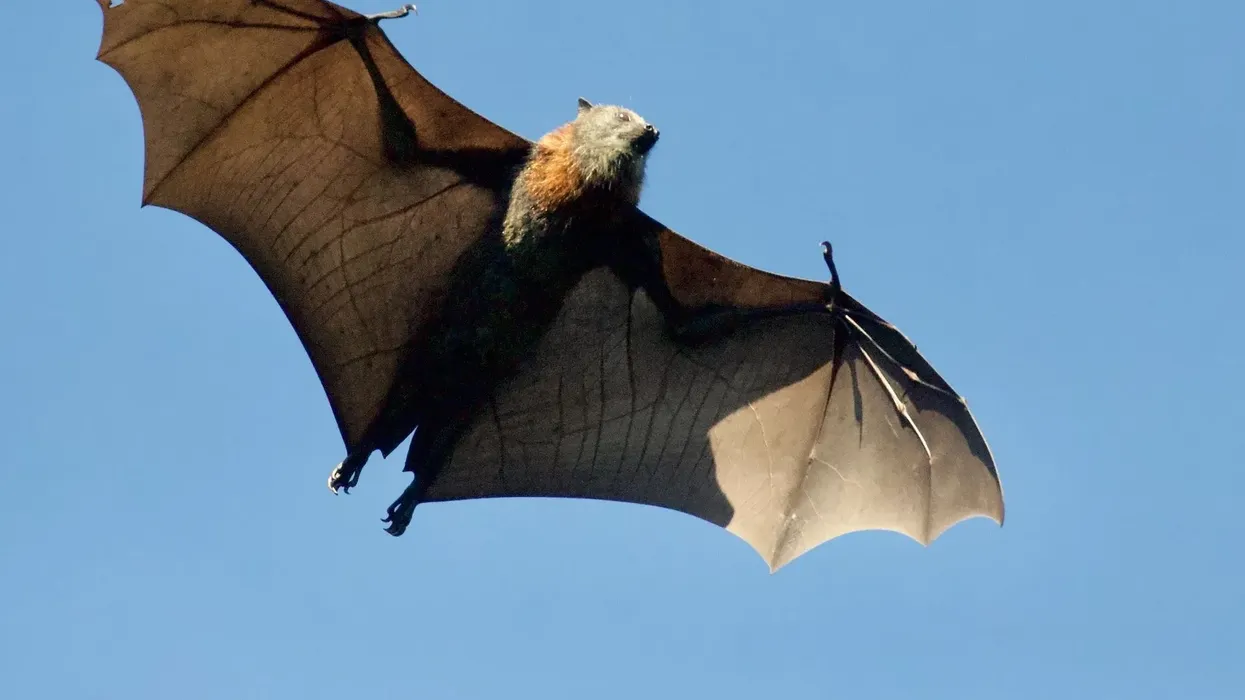The bandtail puffer (Sphoeroides spengleri) is a tiny species of pufferfish found in seagrass beds and coral reefs in the Atlantic ocean. They are found in the Caribbean, Florida, and Mexico, and each area has a different local name for them. In Mexico, their local name is 'botete'.
The bandtail puffer is easy to identify because of its unique coloring and spots. They are even named after the dark band found on their tail. These marine creatures are fascinating because even though they are small, they can be extremely poisonous due to their venom.
If you want to learn more about the bandtail puffer, keep on reading this article, or learn about another amazing marine animal by reading about bigmouth buffalo fish and freshwater butterflyfish here on Kidadl.
Bandtail Puffer Interesting Facts
What type of animal is a bandtail puffer?
The bandtail puffer is a species of pufferfish, also known for being in the family Tetraodontidae. This Tetraodontidae family includes fish that have four large teeth which are fused into the upper and lower plates of their mouths. These teeth allow them to crush the hard shells of mollusks and crustaceans which they feed on.
What class of animal does a bandtail puffer belong to?
The bandtail puffer is a fish in the Actinopterygii class.
How many bandtail puffers are there in the world?
There is no data on the population of the bandtail puffer (Sphoeroides spengleri).
Where does a bandtail puffer live?
The bandtail puffer is a fish found in the ocean in areas with reefs.
What is a bandtail puffer's habitat?
Their habitat is specifically the Atlantic Ocean. These fish are found in seas around Mexico, Brazil, the Caribbean, and Florida. They prefer to live at the bottom of the ocean in areas with plenty of coral reefs and seagrass beds. They can be found in shallow waters or deep in the ocean up to 225 ft (68.5 m).
Who do bandtail puffers live with?
These fish mostly live on their own but can be found amongst other fish in the reefs and seagrass beds of the ocean.
How long does a bandtail puffer live?
The bandtail puffer is quite poorly studied so there is not much data on the length of their life.
How do they reproduce?
These fish reproduce sexually. The type of reproduction is oviparous which means that they produce eggs. Typically, pufferfish produce eggs that are spherical and buoyant, so they float on the surface of the Atlantic.
Hatching occurs after four days. If you look at a newly hatched puffer under a microscope you will see that they already have the features of a fully grown adult puffer, including functioning eyes and mouth. In fact, babies can already eat just a few days after hatching.
What is their conservation status?
The Sphoeroides spengleri bandtail puffer has a conservation status of Least Concern which means that they are not at risk of being extinct and are not endangered. They are stable and widely distributed.
Bandtail Puffer Fun Facts
What do bandtail puffers look like?
The bandtail puffer (Sphoeroides spengleri) has an elongated body, and its width is about a third of its length. They have a mottled olive-brown coloring.
Their ventral sides (the bottom of the fish including the belly) are flat and uniformly white. They have a very defined row of round black spots that trail from their head to beneath their fins. Their body is covered with denticles, small tooth-like bristles, and they are scaleless.
Their caudal fin, their tail fin, is rounded. They get their name from the two black bands found on the tail. Their anal fin, the fin on the underside just before the tail, and the dorsal fin, the fin on its back, are small. The bandtail puffer has a narrow snout.
They have huge eyes relative to the size of their head which are elevated and a goldish color. They have four large teeth to crush their food, two teeth on each row.

How cute are they?
As they are small with huge adorable eyes and they can be cute. However, do not be fooled! These fish are poisonous and getting into contact with one can be fatal.
How do they communicate?
Pufferfish communicate with each other using their teeth. They also vibrate their swim bladder, the organ that makes them float, as a communication tool.
Puffers are known for the ability to inflate when they feel threatened. This unique defense mechanism works as it makes the pufferfish blow up in size. The way this works is that the puffer fills their stomach with water or air.
Once they are inflated, their prickly spines are visible. Predators may be put off a puffer because a spiky ball will definitely be a difficult snack to eat!
It is said by scuba divers that pufferfish are not shy. In fact, they may come out of the reef to take a look at passing divers and do not tend to puff up unless they feel threatened.
How big is a bandtail puffer?
When they are not inflated, a bandtail puffer is up to 11.8 in (30 cm). Normally, they are an average of 4.7 in (12 cm). When they are inflated they can double in size. They can be the same size as a small koi and spotted catfish.
How fast can a bandtail puffer swim?
There is no data on how fast a bandtail puffer (Sphoeroides spengleri) swims. However, puffers are generally notorious for being slow swimmers.
They do get a small energy burst on an initial flight which can allow them to swim quickly for a while. However, this is done in a poorly controlled direction. Even though they may not be fast and may not be able to outswim any threats, they have plenty of other ways to defend themselves, including puffing up.
How much does a bandtail puffer weigh?
There is no data on how much a bandtail puffer weighs.
What are their male and female names of the species?
Males and females are both called bandtail pufferfish.
What would you call a baby bandtail puffer?
Baby fish are called larvae and a baby bandtail puffer is in its larval stage. When larvae are born, they start their life brightly colored.
They also begin feeding at just three days old. After they turn seven days old, they are big enough to inflate. They are unable to inflate any earlier because they are only less than 0.5 in (1.27 cm) in length!
What do they eat?
Bandtail puffers feed on crustaceans, echinoderms, mollusks, plants, and polychaetes. Most of what they eat has a hard shell. Many other big fish may try to prey on the bandtail puffer but may flee because of their spikes, however, tiger sharks and sea snakes often eat puffer fishes. Humans in some areas of the world eat puffers.
Are they dangerous?
The bandtail puffer (Sphoeroides spengleri) is very dangerous. They have very powerful toxins found in their skin and internal organs. This poison can actually be fatal for humans and other creatures. Both bandtail puffers and checkered pufferfish can be poisonous to eat and are very unsafe.
Would they make a good pet?
Bandtail pufferfishes are often kept in aquariums. They do not need that much maintenance. Most importantly, they need enough space and proper water filtration to keep the quality of water at its best. Remember, they are used to cold Atlantic waters in the wild.
They are messy eaters and leave a lot of waste, so their tank may need a bit of cleaning up from time to time. Due to their strong teeth, they may chew on some rocks which will need replacing.
Feeding them shellfish with hard shells such as crustaceans, echinoderms, and mollusks can ensure their teeth are kept in the best shape. It is also important to ensure they are fed a varied diet.
These fish are best kept in a large tank and can even live alongside other species of fish. Be aware, they are likely to feed on any shellfish!
If you do keep a bandtail puffer (Sphoeroides spengleri) as a pet, it is important not to provoke it to inflate. This is actually a stressful action for puffers and can even be fatal for them. If your puffer does inflate, remove the source of stress immediately and allow them to recover on their own.
Did you know...
Puffers can move their eyes independently. In fact, they can change the color of their eyes or the intensity of their eye patterns in response to environmental changes. They have excellent eyesight which helps them to find food and detect any threats early.
As puffers do not have scales, they can be sensitive to water variations and are at risk of getting diseases.
Bandtail puffer (Sphoeroides spengleri) teeth never stop growing. This is to allow them to always have a sharp set of gnashers to crunch away at crustaceans, echinoderms, and other shells.
There are more than 120 species of puffers. Most of them live in the ocean, but some reside in brackish water and fresh water too.
Puffers are a delicacy in some countries. However, if not cooked properly they can be poisonous to humans.
They are often caught by fishermen in the sea using a line and hook. However, they are typically not the fish these fishermen are hoping to catch, so they are often released back into the ocean where they quickly escape into the depth of the Atlantic.
The bandtail puffer (Sphoeroides spengleri) is also caught at the bottom of the ocean by small hooks that are often used to catch squid.
These puffers are actually quite friendly and will allow you to get fairly close if you move slowly. Be careful to never touch one though.
Female pufferfish can lay up to 200,000 eggs in each batch. These tiny eggs stick to each other and stay at the bottom of the ocean in their masses. These eggs then hatch after five days.
The coloring of these fish allows them to be camouflaged against the coral in the reef, a natural defense against any predators.
These fish have large emerald-gold eyes that glow.
Do all pufferfish have teeth?
Yes. All pufferfish have four teeth. They have two teeth on the top and two teeth on the bottom. Both of these teeth are fused together to look like one big tooth.
What zone do pufferfish live in?
Pufferfish are found in the Atlantic, Indian, and Pacific oceans. They can be found around coral reefs. They are found in the sunlight zone, which is the upper 656 ft (200 m) of the ocean. Very little sunlight can reach lower than this depth. The sunlight zone is also called the euphotic zone.
Here at Kidadl, we have carefully created lots of interesting family-friendly animal facts for everyone to discover! Learn more about some other fishes from our lungfish facts or skipjack tuna facts pages.
You can even occupy yourself at home by coloring in one of our free printable pufferfish coloring pages.










